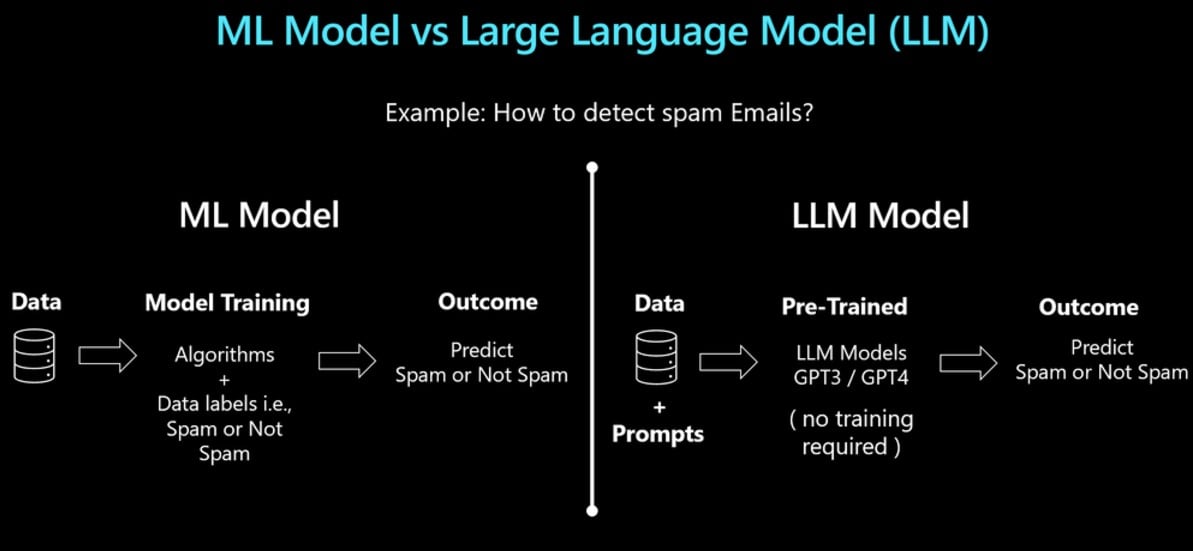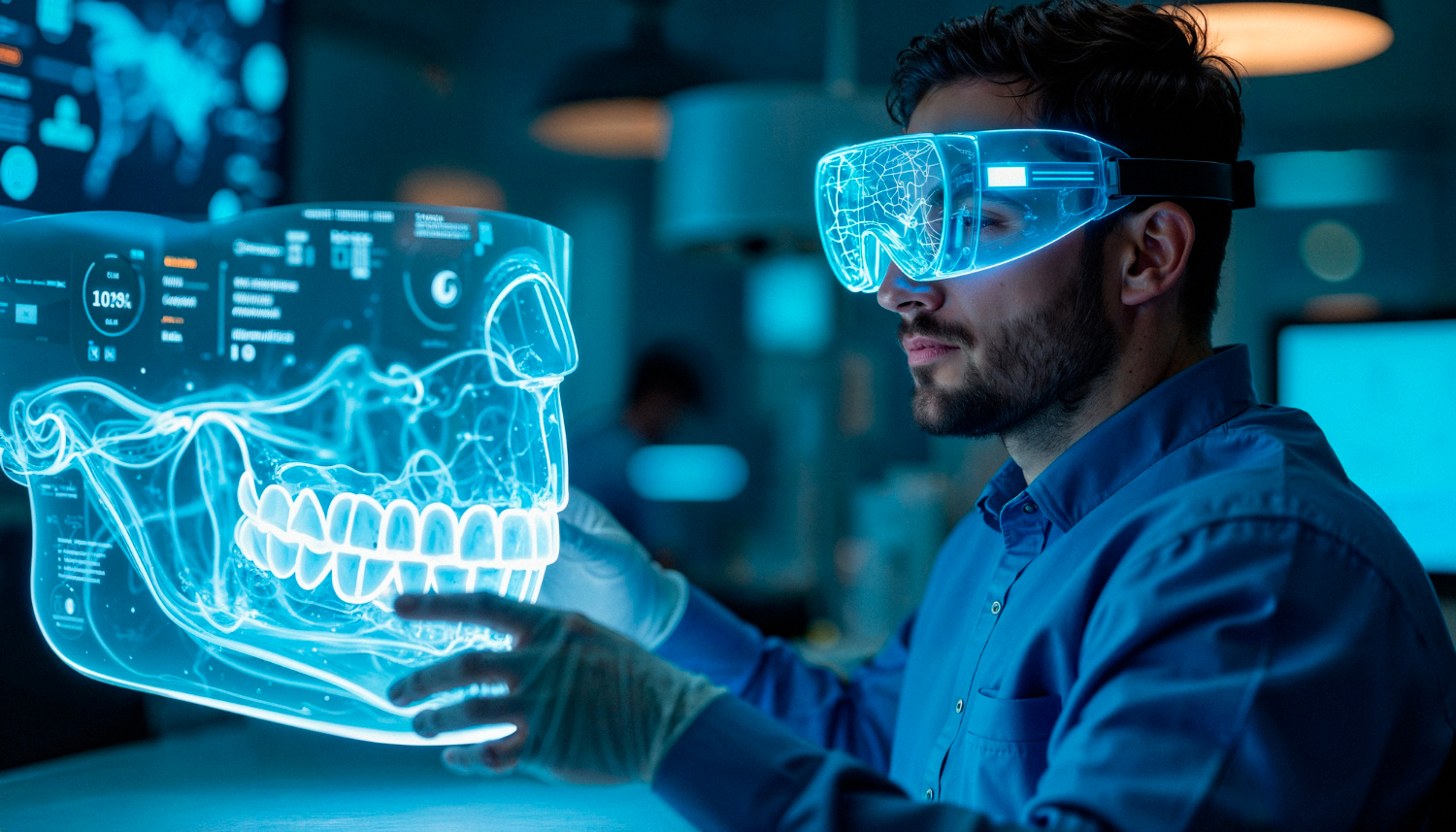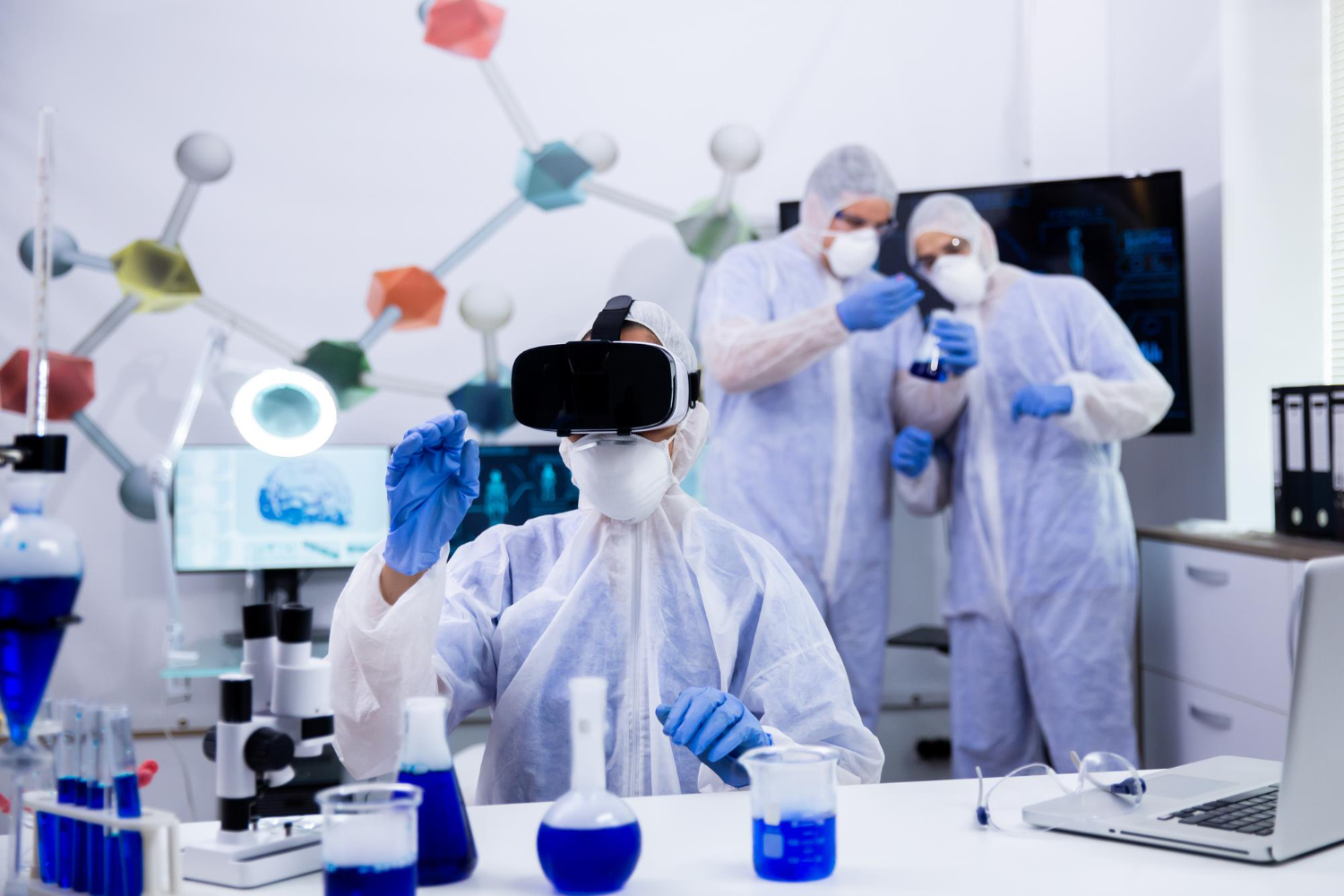Introduction
Artificial Intelligence (AI), Deep Learning (DL), and Machine Learning (ML) in general have become integrated into a plethora of procedures and applications. Great examples include GPU-accelerated Computer Vision (CV) and Augmented Reality (AR) or Extended Reality (XR), in fields such as agriculture, medicine, pharmaceutics, the food industry, and even cosmetics! This integration could not have been accomplished without Machine Learning Operations (MLOps), a core function of the development of any ML algorithm, the only job of which is the transfer of a working model to any functional and productive routine. This might not seem like a big deal, but let us see if you change your mind after we explain what MLOps are and compare them to Large Language Model Operations (LLMOps). Keep reading to find out more!
Read more: Small vs Large Language Models
What’s the Difference?
On one Hand
ML has a very straightforward operation. You give it info, you train it to do a job, and then you test it and evaluate its performance. The closer its accuracy is to 100%, the better the results of whatever it needs to do. Examples include anything from simple classification tasks to organising shop inventories, forecasting trends and crop production, or matching outfits to occasions. How is that accomplished on a commercial level, though? The answer lies in MLOps. Let us explain.
Developing an ML algorithm consists of specific steps, mainly data input, data preparation, model training, evaluation, tuning, and revaluation, while the last step is model deployment with continuous monitoring. To accomplish these tasks, engineers of different fields need to collaborate. This depends not only on the complexity of the model but also on the field of applications (What is MLOps?, 2021). Here is exactly where MLOps enter the game. MLOps are split into three discrete levels.
Level 0 MLOps are operating ML models, where everything happens more or less manually, from data preparation and the entire training process to the evaluation and validation of the model’s performance. At level 1, we have the same steps, but the training is achieved by an automated pipeline. Simply put, if at level 0, one deploys a pre-trained model to production, and at level 1, you deploy a pre-trained pipeline that runs perpetually to serve the incorporation of the already trained model into other apps. Level 1 requires a significant number of automated steps and continuous training with fresh data, while Level 1 MLOps use the same pipeline in development, pre-production and production environments. Reaching the final and most advanced level, Level 2, is always the choice of a company that wants to experiment more by creating new models that require continuous training. Level 2 MLOps have the same specs as those of Level 1, with the addition of an orchestrator and a registry to keep track of the multiple models running simultaneously or successively (What is MLOps? - Machine Learning Operations Explained - AWS).

On the Other Hand
LLMOps have their own complexities and goals. While MLOps are generic and can be applied to any ML model application, LLMOps are targeted towards Large Language Models (LLM), hence their name. In a nutshell, LLMOps are pretty much Natural Language Processing (NLP) MLOps. We have all witnessed the rise of different NLP assistants from leading companies such as Microsoft, Google, and OpenAI, all bragging that their Generative AI model is the best, while it is only a matter of preference for most people out there. One thing is certain: None of the above NLPs could have been developed without the use of LLMOps (LLMOps: What it is and how it works).
As with any ML algorithm, LLMOps need to follow specific steps. Don’t forget that no matter how sophisticated they are, they are still ML; therefore, the first step is to train the model with large amounts of data that have undergone some sort of preprocessing. The data are then fed into the model, which is trained depending on the result we wish to achieve using either supervised, unsupervised, or reinforced training. Once the training is done, the model can be tested, and if it passes the requirements, it can be deployed to a production environment, for example, NLP that helps you with your homework. Of course, LLMOps are dynamic models and require continuous monitoring and tweaking to ensure that the performance stays high while at the same time secure. Most of the data used by such models are data shared by users through their consent, yet the last thing a company needs is data loss by pirates or hackers (LLMOps – Core Concept and Key Difference from MLOps, 2023).
LLMOps in ML can find applications not only in different fields but also within different other AI algorithms, such as Computer Vision assisted NLPs for the development of Extended Reality assistants. In addition to training the model to understand speech or text, an XR assistant will have to be convincing when it ‘talks’. By automating this section of the Generative AI pipeline, we save not only time but also processing power during training. Another application of LLMOps that you might not have considered is the detection of whether or not an email is spam. Have a look at the figure below to see how Microsoft does it!

But there is so Much Data!
Indeed, there are, and one needs to be very cautious when training any of the two models we have discussed so far. The step where things can probably go south is data prep. It doesn’t matter how intuitive an algorithm is. If the data has flaws, say goodbye to good results. Things to consider include typos, missing values, senseless input, not enough data for the model to train, and overfitting.
Prompt Engineering
Let’s now recap and see how the dots are connected and by whom. You want to develop a functional NLP model with real discussion capabilities. You create MLOps models, feed them with data, and, after testing them, incorporate them into LLMOps models. Tech-wise that is all, but how can you ensure that the final model is indeed functional? Careful now; ‘functional’ means not only giving correct answers but also being able to follow the flow of a conversation naturally, similar to having a real interlocutor. This is where the prompt engineers come in.
First things first. The term ‘prompt’ refers to any request made by a human to a Generative AI system. As we already discussed in our NLPs for customer service article, the importance of removing unnecessary things from a text is beyond measure for the proper function of any NLP model. A significant part of ensuring this is text scraping, a procedure that greatly simplifies the information the model receives so that it can later match it to phrases the meaning of which it already knows. However, this is not the only thing to look out for.
Prompt engineers are responsible for the entire conversational part of the NLP, so they need to learn to think like both AI and humans. Some of the things that prompt engineers need to consider when the model is being built are:
-
Provision of examples: The basis of the training of the model. If there are not enough or properly stated examples, any MLOp will perform poorly.
-
Specificity: A key element of proper answers is specificity. This is where the operation of a model is truly evaluated by testing if it can tell apart similar concepts.
-
Instructions provision: The engineer needs to make sure that the model can follow instructions when a prompt is stated.
-
Chain of thought prompting experiments: The last step for a successful model is to run experiments to check that the model can not only follow instructions but can also understand and follow your way of thinking to generate results and answer questions, no matter how many times you change it.

In Practice
If you feel limited in using this technology, don’t worry. Technology is on your side, and everything is possible. Edge Computing is the answer to your problem. Basically, it doesn’t matter where you are in the world or how much space you have. Edge Computing as a concept ensures that you can have as much processing power as you want on a local level. The only ‘limitation’ to that is your budget, yet it depends on how flexible you are. Simply put, you don’t need to start big. Edge computing consists of many components that are 100% modular. As with all the important things, start small and build your way up!
Another advantage that everyone has is the power of the Internet of Things (IoT). Are you limited by space or access to hardware? No sweat! IoT has made it possible for different pieces of equipment to communicate, as long as they are in the same network or to multiple networks that are communicating.
Summing Up
As you can see, we have barely scratched the surface of what MLOps and LLMOps are, but we believe that things are much simpler for you. NLPs are a fascinating field of engineering with many daily applications, not only in corporate environments but also in home environments. There is no doubt that implementing ML in any field will give you a great advantage, something that just cannot be achieved without MLOps or LLMOps.
What We Offer
At TechnoLynx, we are driven to innovate. Our custom-tailored solutions for your needs are made on demand, made from scratch, and specifically designed for your project. We specialise in delivering tech solutions because we already understand the benefits of AI better than anyone. We are committed to providing cutting-edge solutions in all fields while ensuring safety in human-machine interactions. We are proud to say that our team is great at managing and analysing large data sets while simultaneously addressing ethical considerations.
We offer precise software solutions that empower many fields and industries using innovative AI-driven algorithms, always adapting to the ever-changing AI landscape. The solutions we present are designed to increase accuracy, efficiency, and productivity. Feel free to contact us to share your ideas or questions. We will be more than happy to make your project fly!
Continue reading: Introduction to MLOps
Read more about our MLOPs services!
List of references
-
An Introduction to LLMOps: Operationalizing and Managing Large Language Models using Azure ML (no date) TECHCOMMUNITY.MICROSOFT.COM (Accessed: 12 June 2024).
-
LLMOps – Core Concept and Key Difference from MLOps (2023) TECHVIFY Software (Accessed: 10 June 2024).
-
LLMOps: What it is and how it works (no date) Google Cloud (Accessed: 10 June 2024).
-
What is MLOps? (2021) Databricks (Accessed: 10 June 2024).
-
What is MLOps? - Machine Learning Operations Explained - AWS (no date) Amazon Web Services, Inc. (Accessed: 10 June 2024).
-
What is Prompt Engineering? Generate the Perfect AI Response (2023) Content @ Scale, 10 August. (Accessed: 12 June 2024).
-
Cover image: Freepik













